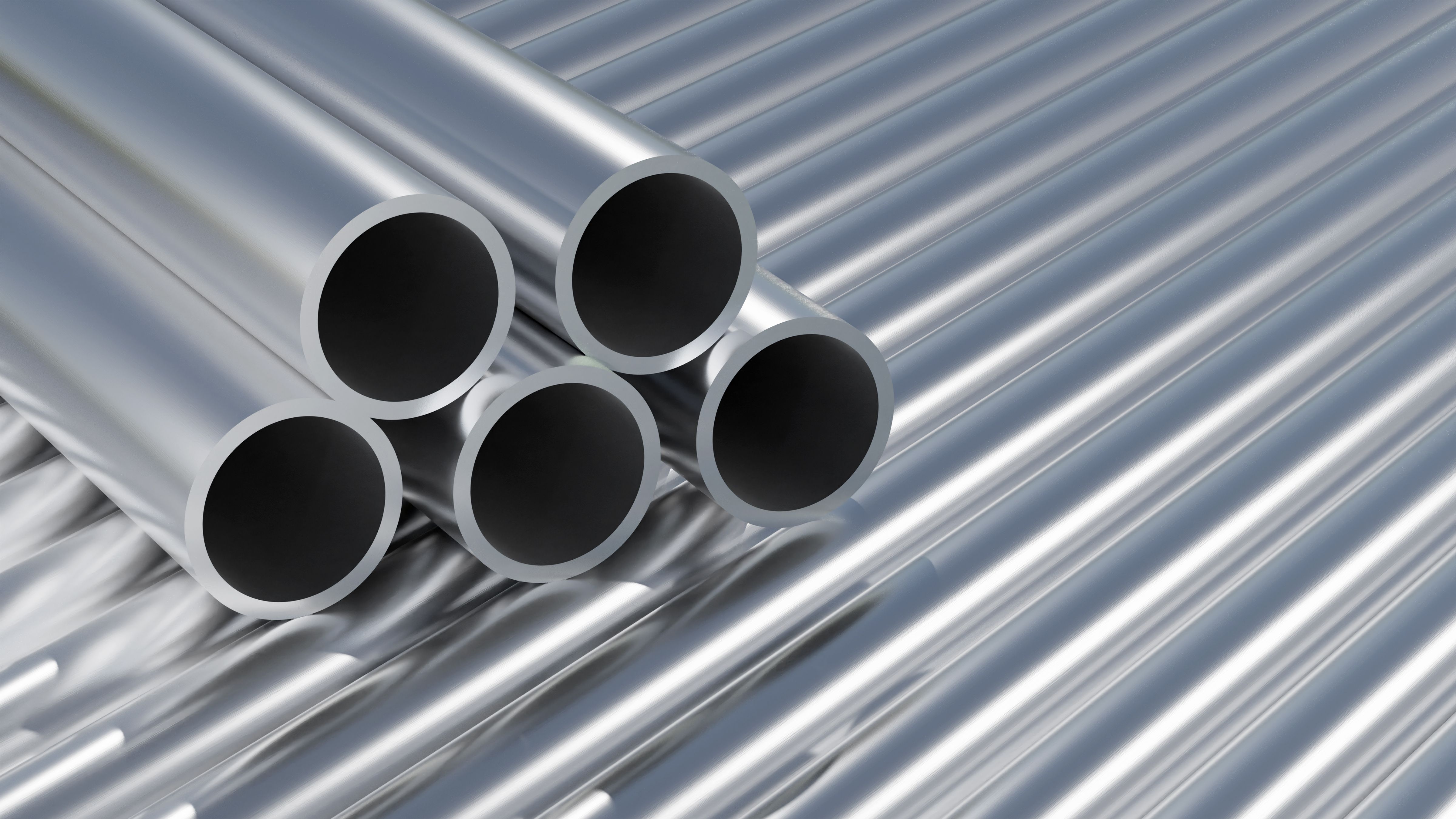LIBS System Built on Microjoule High PRF Laser Identifies Aluminum Alloys for Recycling Potential
Differing grades of aluminum alloys have large differences in their composition, especially when it comes to trace elements, emphasizing the need for them to be evaluated for means of production, use, and recycling.
Recently in the journal Spectrochimica Acta Part B: Atomic Spectroscopy, a study examined the dilemma of increased aluminum alloy recycling in the past decade, the specific problem being that these alloys, while ideally used for aviation and construction purposes, have significant differences in composition and trace element content due to varying standards of production in different countries (1). A laser-induced breakdown spectroscopy (LIBS) system based on a microjoule high pulse repetition frequency (PRF) laser was used.
Group, set of simple new high quality shiny galvanized stainless steel metal aluminium alloy pipes stacked, iron pipes, industrial construction materials, supplies storage, warehouse stock, nobody | Image Credit: © Tomasz - stock.adobe.com

Previous attempts to classify aluminum alloy composition have run the spectroscopic gamut, according to the authors, who hail from Changchun, Jilin Province, China. These methods include atomic absorption spectroscopy (AAS), inductively coupled plasma–optical emission spectroscopy (ICP-OES), or x-ray fluorescence (XRF) spectroscopy (1). What LIBS provides, by comparison, are the advantages of fast and minimally-invasive analysis with little preparation; also, the common main elements of aluminum alloys—aluminium (Al), magnesium (Mg), iron (Fe), and manganese (Mn), primarily—contribute to a lower breakdown threshold for the alloy in question.
The microjoule high PRF laser’s single-pulse energy is lower than that of other lasers used in previous, similar experiments, as is the spectral intensity of the plasma that the spectrometer collects (1). At the same time, the special feature of the high PRF is that it allows a sample to be ablated thousands of times within a short period, generating thousands of plasmas, reciprocally enhancing the intensity of the collected spectra.
There are two acquisition modes, fixed and motion, most often used with a microjoule high PRF LIBS setup, according to the researchers, and the goal of this study was to improve peak spectrum intensity while reducing the spectrum’s relative standard deviation (RSD). Additionally, to gauge the impact of experimental parameters on the accuracy and precision of classifications, a back propagation neural network (BP-ANN) model combined with a confusion matrix was employed for verification (1).
After the optimization of the experimental and BP-ANN model parameters, the researchers said the microjoule high PRF LIBS system they devised was able to effectively classify seven aluminum alloy samples. In setting the number of hidden layer neurons to 5, they said, the maximum accuracy of the BP-ANN model for these samples reached 93.29% (1). In the motion mode, with the number of neurons increased to 6, classification accuracy bumped up to 97.71%. Although one mode did show superiority over the other, the research team concluded that the analytical method showed great value in broader applications. In motion mode as compared to fixed mode, the high accuracy and precision achieved was predicted to be advantageous for future industrial production lines.
Reference
(1) Qu, D.; Yang, G.; Jin, X.; Chen, G.; Bai, Z.; Li, C.; Tian, D. Parameter Optimization of Microjoule High Pulse Repetition Frequency Laser Induced Breakdown Spectroscopy for Aluminum Alloy Identification. Spectrochim. Acta, Part B 2023, 209, 106794. DOI: 10.1016/j.sab.2023.106794
LIBS Illuminates the Hidden Health Risks of Indoor Welding and Soldering
April 23rd 2025A new dual-spectroscopy approach reveals real-time pollution threats in indoor workspaces. Chinese researchers have pioneered the use of laser-induced breakdown spectroscopy (LIBS) and aerosol mass spectrometry to uncover and monitor harmful heavy metal and dust emissions from soldering and welding in real-time. These complementary tools offer a fast, accurate means to evaluate air quality threats in industrial and indoor environments—where people spend most of their time.
Laser Ablation Molecular Isotopic Spectrometry: A New Dimension of LIBS
July 5th 2012Part of a new podcast series presented in collaboration with the Federation of Analytical Chemistry and Spectroscopy Societies (FACSS), in connection with SciX 2012 — the Great Scientific Exchange, the North American conference (39th Annual) of FACSS.
New Multi-Spectroscopic System Enhances Cultural Heritage Analysis
April 2nd 2025A new study published in Talanta introduces SYSPECTRAL, a portable multi-spectroscopic system that can conduct non-invasive, in situ chemical analysis of cultural heritage materials by integrating LIBS, LIF, Raman, and reflectance spectroscopy into a single compact device.